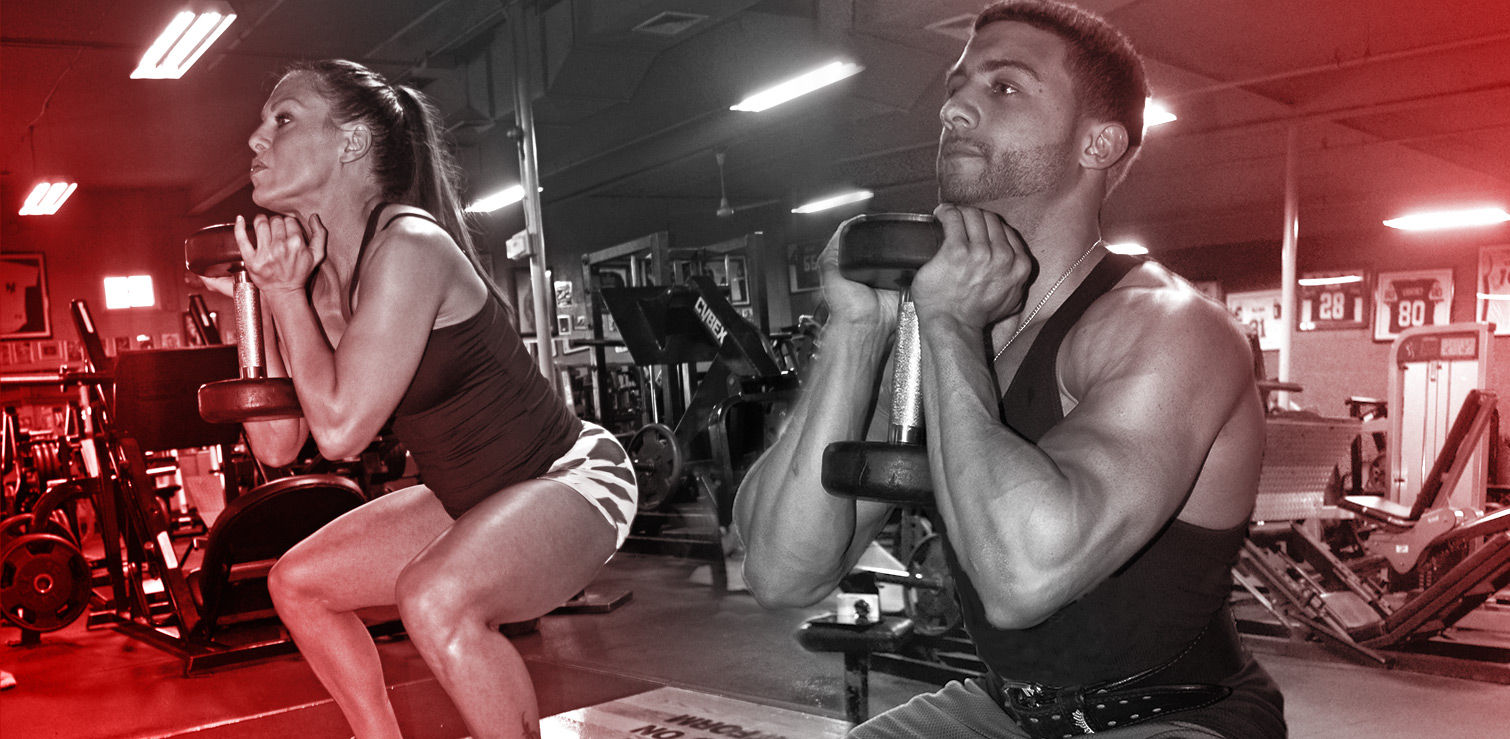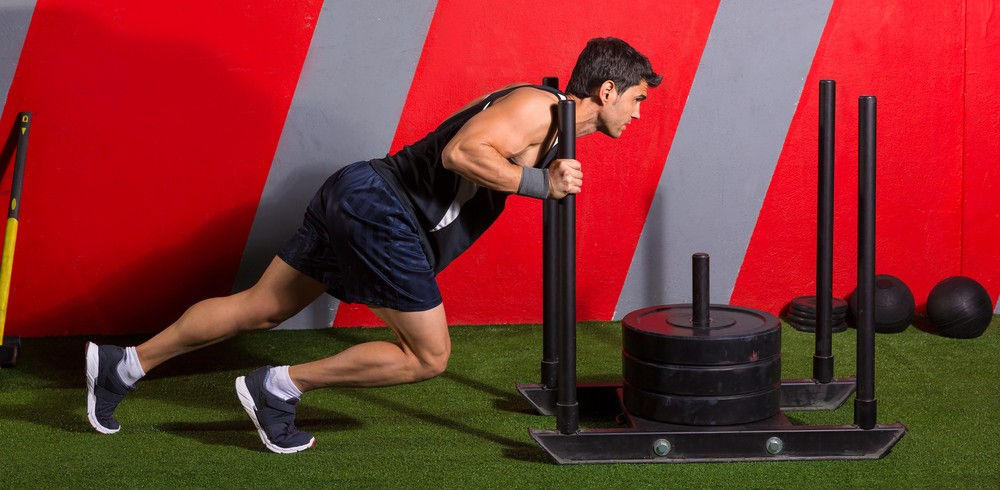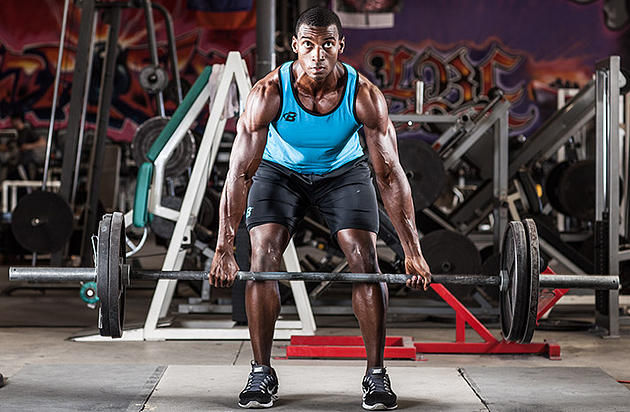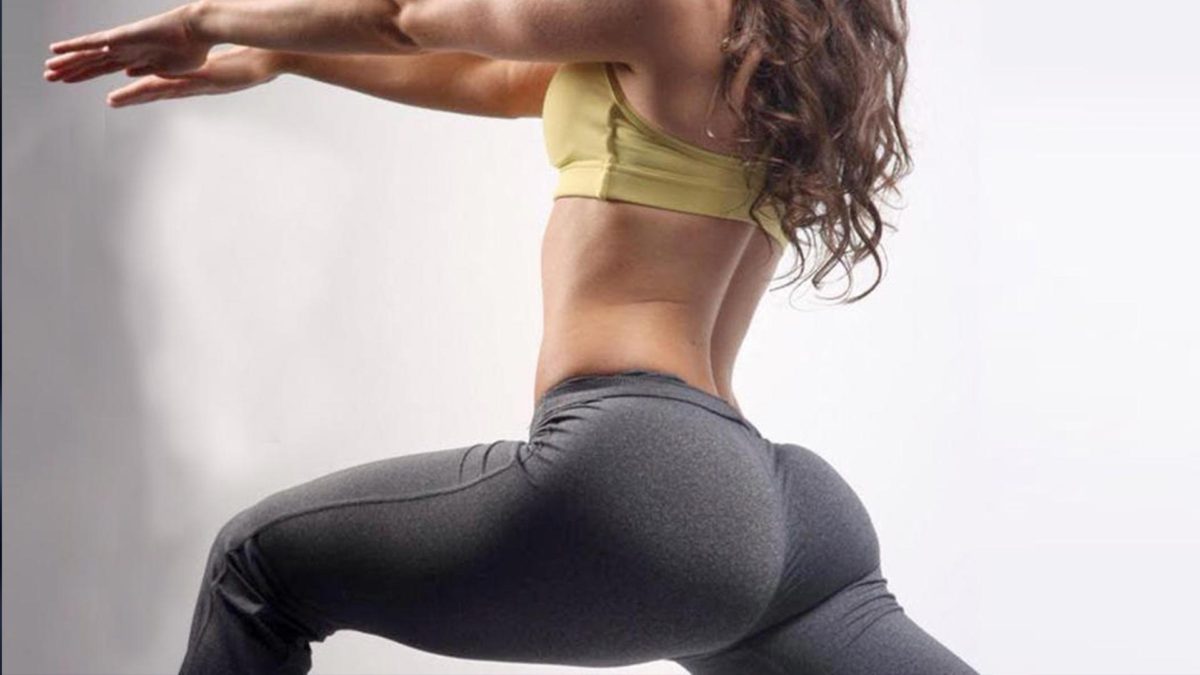How to Design an Optimal Glute Training Program
In efforts to help the readers of my blog more effectively train their glutes, I thought I’d shed some light on program design tactics for glute building. This isn’t as easy as it seems since the design of each training session depends on many factors, including the goal of the lifter, the training split, training frequency, equipment availability, and more. Some of my readers inevitably adhere to body part split routines, while others stick to lower/upper splits, push-pull splits, or total body training protocols. Some lifters train for purely aesthetics/physique purposes, while others have the strength (powerlifting) or athletic goals in mind. I happen to like total body training for myself and most of my clients, but there are ways to make each training template highly effective for glute building. Below I will provide some tips and examples to satisfy a wide variety of lifters.
Bret’s Preference: Full Body Training
As I mentioned earlier, I love my total body training routines. I’m going to give you a sample four day glute training program that I’d give someone who trained with me at my gym – The Glute Lab. I have posted most of the exercises listed below on my Instagram channel at some point in time, and I have many detailed explanations on my YouTube channel too. I realize that most of my readers don’t have access to all of the equipment I have in my garage gym, but I didn’t want to compromise my ideal program. Later in the article, I’ll stick to more common exercises. Keep in mind that I train mostly women whose primary goal is to build their glutes. I train female powerlifters differently, which I’ll outline below. By the way, this is the type of system Kellie, and I use with Strong Curves and also with Getting Glutes.
Monday
- Barbell hip thrust pyramid 1 x 10, 1 x 8, 1 x 6, 1 x 15
- Goblet squat 3 x 12
- Heavy kettlebell deadlift 2 x 15
- 45 degree hyper 2 x 20
- Band seated hip abduction 2 x 20
- Incline press 2 x 10
- Lat pulldown 2 x 10
Tuesday
band hip thrust 3 x 10
walking lunge 2 x 50 (total steps, so 25 per leg)
reverse hyper 3 x 10
lateral band walk 2 x 20
push up 2 x AMRAP
Hammer Strength row 2 x 10
Thursday
- Barbell hip thrust 3 x 6
- Bulgarian split squat 2 x 10
- 45 degree hyper 2 x 30
- Pendulum quadruped hip extension 2 x 10
- Band side lying clam 2 x 20
- Dumbbell shoulder press 2 x 10
one arm row 2 x 10
Friday
- Double band hip thrust 3 x 20 (band around knees and band over the hips)
- Cybex leg press 3 x 10
- American deadlift 2 x 8
- Band standing hip abduction 2 x 20
- Dumbbell bench press 2 x 10
- Inverted row 2 x 10
Some people would rightfully point out that this is a lot of volume for the glutes, but trust me, they can handle it. When combined with sound nutrition, I would argue that this program is equally effective at burning fat since these routines are brutal in terms of revving up the metabolic rate. This is how I go about building glutes, and it’s why I see such great results with my clients.
But make no mistake about it, my clients also tend to develop great upper body strength and development simply because they’re performing compound pressing and pulling movements four days per week. The program is centered around hip thrusts, which is what I think builds glutes the best, but it contains a ton of variety to hit the upper and lower fibers with high reps, medium reps, and low reps. This routine will deliver what I believe to be the optimal amount of mechanical tension, metabolic stress, and muscle damage to the glutes (see HERE for an explanation of these terms). But not everyone wants to train in this manner, especially men who desire more isolation movements for their upper bodies, so let’s move on to other popular forms of training.

Tips for Bodybuilders that Stick to Bodypart Splits
Every bodybuilder has his or her own unique routine, but the vast majority of them adhere to body-part splits. Let’s consider the lifter that prefers body-part split training but is severely lacking in glute development. This lifter might benefit from straying from the norm and training lower body three times per week and upper body twice or three times. For example, the lifter could train glutes on Monday, chest/shoulders/triceps on Tuesday, quads on Wednesday, back/rear delts/biceps on Thursday, and hammies on Friday. This way, the glutes are hit effectively on all 3 lower body days. Let’s assume that this lifter trains out of a common commercial gym. Maybe the various sessions look like this:
Monday (glutes)
- Barbell hip thrust or barbell glute bridge: 3 x 8-12
- Butt blaster machine or cable glute kick back: 3 x 10-15
- Bodyweight back extension or bodyweight reverse hyper: 3 x 20-30
- Cable standing hip abduction or lateral band walk: 3 x 10-20
- Seated hip abduction machine or band seated hip abduction: 3 x 20-30
Tuesday (chest/shoulders/tri’s)
- Barbell incline press or dumbbell incline press: 3 x 6-8
- Barbell military press or seated shoulder press: 3 x 8-12
- Push ups: 3 x AMRAP (as many reps as possible)
- Dumbbell lateral raises or cable lateral raises: 3 x 10-12
- Rope triceps extensions or v-bar triceps extension: 3 x 10-12
Wednesday (quads/glutes)
- Front squat or back squat: 3 x 6-8
- Leg press or hack squat: 3 x 10-12
- Dumbbell walking lunge or smith machine reverse lunge: 3 x 8-12
- Leg extensions: 3 x 10-20
- Crunch 2 x 20
- Side crunch 2 x 20
- Hanging leg raise 2 x 10
Thursday (back, rear delts, bi’s)
- Weighted or band assisted chin up or lat pulldown: 3 x 6-8
- Chest supported row or seated row: 3 x 8-12
- One arm row or inverted row: 3 x 10-12
- Prone rear delt raise or reverse pec deck: 3 x 10-12
- Easy bar curl or alternating dumbbell curl: 3 x 10-12
Friday (hams, glutes)
- Conventional deadlift or Romanian deadlift: 3 x 6-8
- Weighted back extension or single leg back extension: 3 x 10-12
- Stability ball or Valslide leg curl: 3 x 8-12
- Lying leg curl or seated leg curl: 3 x 10-20
- Calf raise machine 2 x 10
- Seated calf raise machine 2 x 20
As you can see, this program would hammer the glutes three times per week. Monday’s session would involve very high amounts of tension, and metabolic stress for the glutes, Wednesday’s session would involve moderate amounts of tension and high amounts of muscle damage for the glutes, and Friday’s session would involve moderate amounts of tension and metabolic stress for the glutes. Moreover, the upper and lower glutes would be hit very hard, especially in Monday’s session.
The lifter could attain even greater volume load with the glutes by performing glute activation exercises (HERE are some examples of low load glute activation exercises) during the dynamic warm-up on each lower body day, and additional hip thrusts and lateral band work could be tacked onto the end of the Wednesday and Friday leg sessions. Of course, shoulders or arms could be taken out of the Tuesday/Thursday sessions and added onto a separate Saturday session.
Tips for Powerlifters
There are many effective ways to train for powerlifting strength, but for the sake of simplicity, let’s consider the powerlifter that has a squat day on Monday, a bench day on Wednesday, a deadlift day on Thursday, and a hypertrophy day on Saturday. Sticking to just squats and deadlifts alone can build some great glutes, especially with males. But let’s say that this lifter isn’t satisfied with his or her level of gluteal development. Something like this could work quite well in this situation:
Monday (squat day)
- Back squat 5 x 5
- Barbell hip thrust or barbell glute bridge 3 x 10
- Back extension or reverse hyper 3 x 10
Wednesday (bench day)
- Bench press 5 x 5
- Military press or close grip bench press 3 x 10
- Chest supported row or seated row 3 x 10
Thursday (deadlift day)
- Conventional deadlift or sumo deadlift 5 x 5
- Front squat or Bulgarian split squat 3 x 10
- Single leg hip thrust or kettlebell swing 3 x 10
Saturday (hypertrophy day)
- Lat pulldown 2 x 10
- Dumbbell bench press 2 x 10
- Inverted row 2 x 10
- Lateral raise 2 x 10
- Hammer curl 2 x 10
- Cable tricep extension 2 x 10
- Prone rear delt raise 2 x 10
- Lateral band walk 2 x 20
- Bodyweight back extension 2 x 20
As in the case with the bodybuilding program above, the glutes are hit three times per week in this sample powerlifting plan. Saturday’s session will pump some extra blood into the upper and lower glutes while not interfering with recovery for Monday’s squat session. Extra volume load for the glutes can be attained by performing glute activation exercises during the dynamic warm-up on Monday and Thursday.

Tips for Athletes
Athletes train in a variety of manners, but most of them stick to full body training protocols. Here’s a sample program that combines explosive training with heavy lifting. We’ll assume that the athlete trains three times per week and does his/her lifting after already completing any sprint, plyo, agility, and medball work.
Monday
- Hex bar jump squat 4 x 3
- Heavy kettlebell swing 3 x 8
- Back squat 3 x 6
- Barbell hip thrust 3 x 6
- Close grip bench press 3 x 6
- Chest supported row 3 x 8
- Cable hip flexion 2 x 10
- Ab wheel rollout 2 x 10
- Side plank 2 x :30 sec
Wednesday
- Heavy sled push 3 x 20m
- Explosive 45 degree hyper 3 x 8
- Bulgarian split squat 3 x 8
- Block pull 3 x 6
- Incline press 3 x 8
- Weighted chin up 3 x 3
- Nordic ham curl 3 x 3
- Pallof press 2 x 10
- Hollow body hold 2 x :20 sec
Friday
- Jumping lunge 3 x 6 (3 jumps per leg)
- One arm power snatch 3 x 5
- Back squat 3 x 6
- Barbell hip thrust pyramid 1 x 10, 1 x 8, 1 x 6, 1 x 20
- Close grip bench press 3 x 6
- Chest supported row 3 x 8
- Ankle weight standing hip flexion
- RKC plank 2 x :20 sec
- Farmer’s walk 2 x 20m
As you can see, this routine will build and strengthen the glutes so they can produce incredible amounts of force and power in sports. This routine has two explosive lifts per day (see HERE for videos of the explosive lifts), along with a knee dominant exercise, a hip dominant exercise, an upper body push, an upper body pull, and some accessories sprinkled in such as multidirectional core stability, hip flexion, and/or eccentric hamstring work. If the athlete prefers Olympic lifts, these can be performed in substitution for the explosive lifts listed above.

Tips for CrossFitters
CrossFitters are already performing a high amount of work, so we don’t want to add much more onto their plates. They can just do their normal CrossFit training but add in two glute WODs per week.
Bret’s Glute WOD
- RKC plank Barbell glute bridge – 100kg males / 60 kgs females
- Sumo walks – mini-band 3 rounds of 20 seconds / 20 reps / 20 reps for time
- Hip Thruster UK Glute WoD Hip thrust – 100kg males / 60kg females
- Heavy RKC-style kettlebell swing – 32kg males / 20kg females 3 supersets without rest – 21 / 15 / 9 reps for time
Tips for the Newbie that Trains at Home
The beginner who trains at home can train very frequently since he or she won’t be getting “beat up” by heavy loading. They can begin with plenty of low load glute activation work (see HERE), and they should master the box squat, hip hinge, and glute bridge (see HERE). They can initially use furniture to perform various glute exercises (for some ideas, see HERE and HERE), then eventually graduate to a commercial gym or purchase equipment for their home. First, some short bands, dumbbells, and kettlebells can be purchased, and eventually a barbell with plates (preferably bumper plates), a rubber mat, a bench, a power rack or squat stands, and a thick bar pad for hip thrusts (or better yet, a hip thruster for band and barbell hip thrusts). An excellent recipe for training at home, assuming the individual possessed all the necessary equipment, could involve daily band hip thrusts, goblet squats, kettlebell swings, and lateral band walks.
Conclusion
I hope that this article has given you some ideas regarding how you can best build your glutes no matter what type of program you prefer. Happy gluting!
See more at http://bretcontreras.com/how-to-design-an-optimal-glute-training-program/

